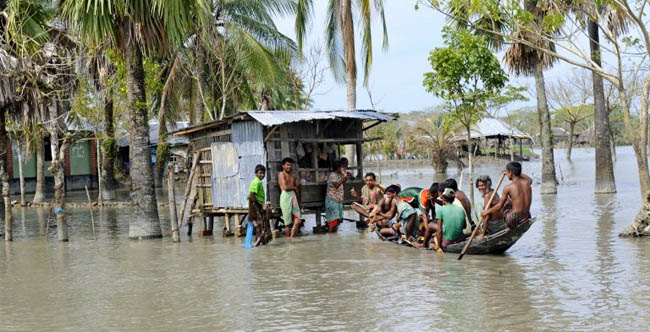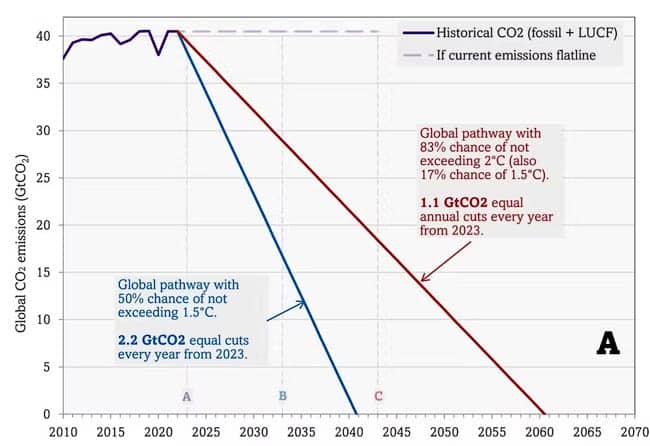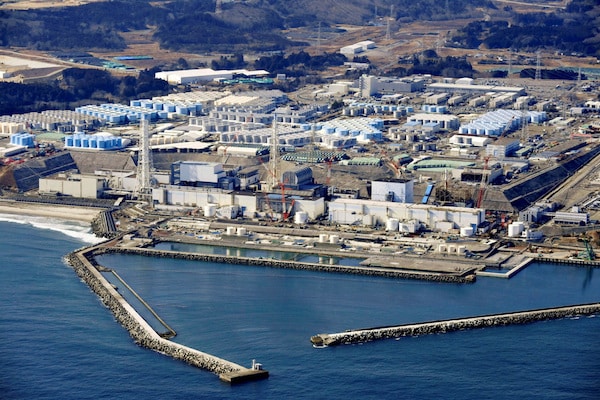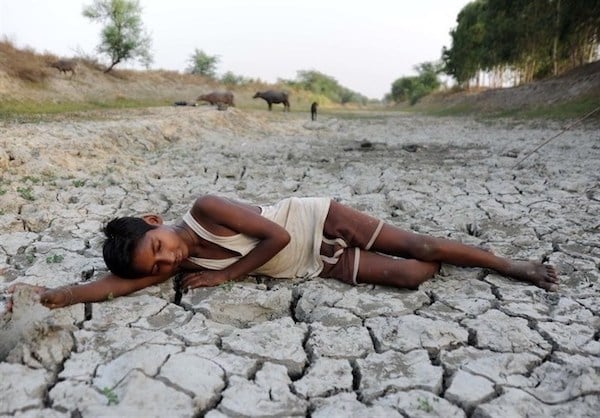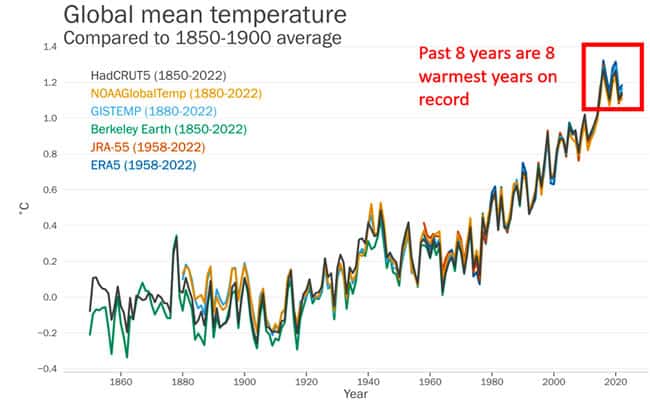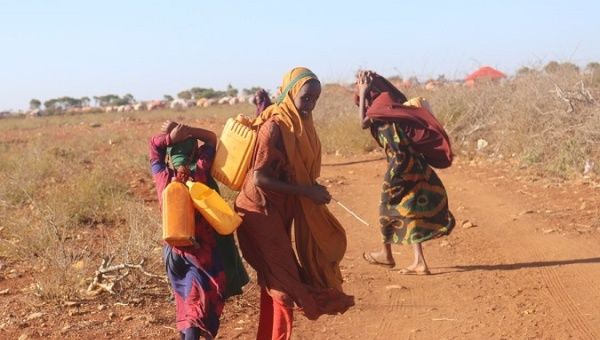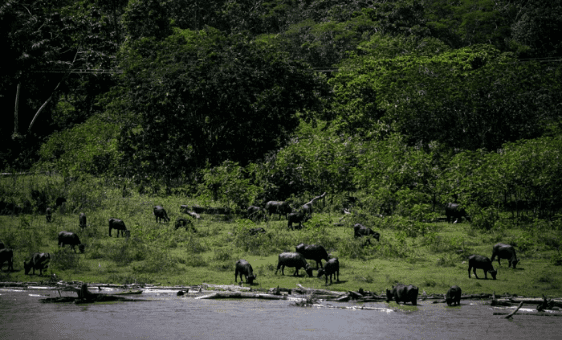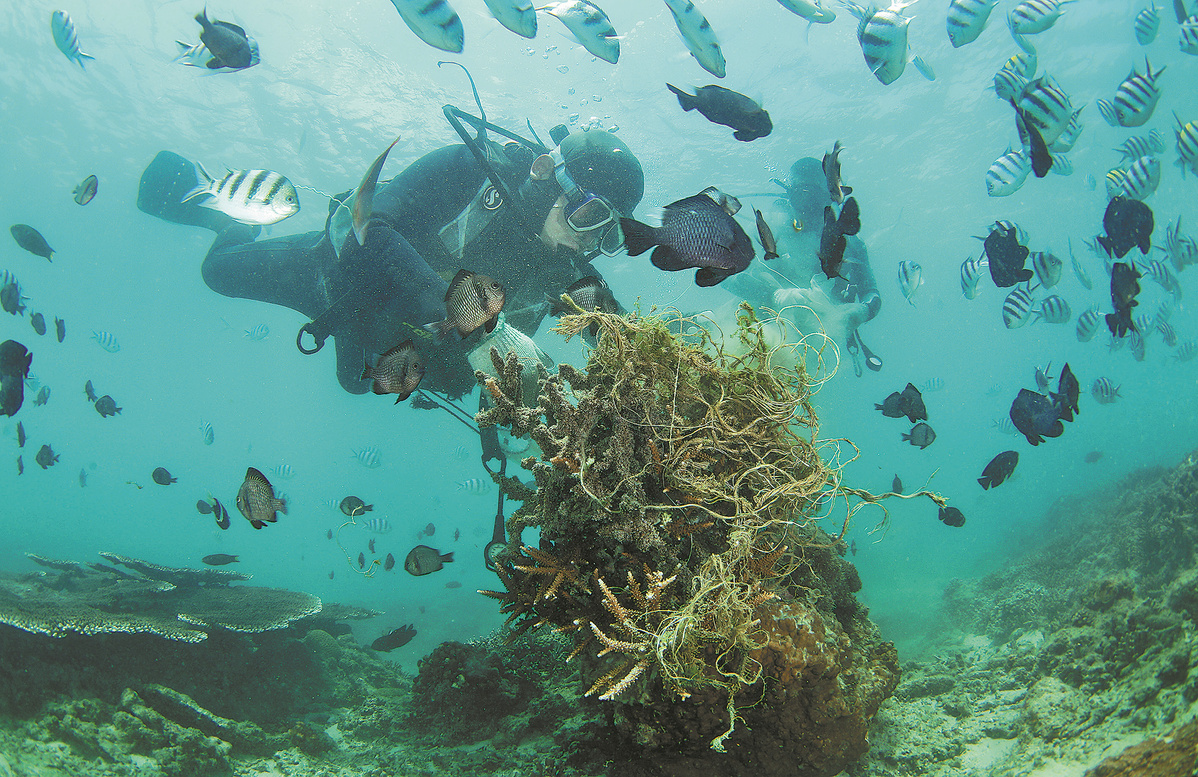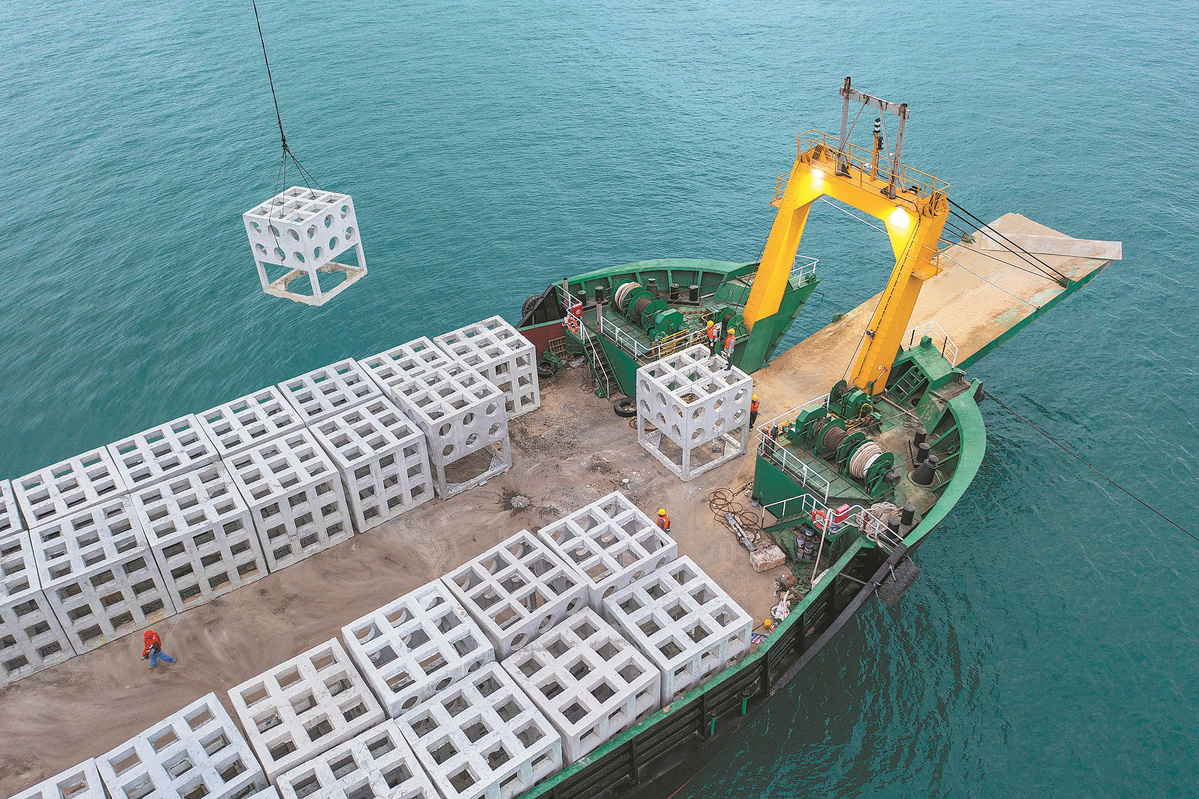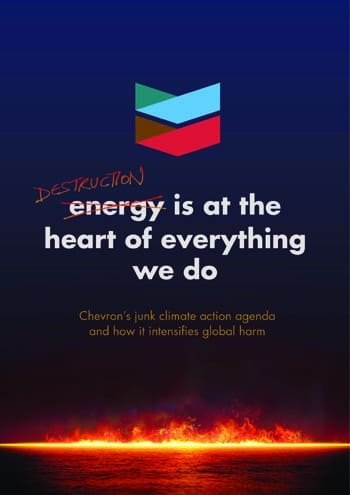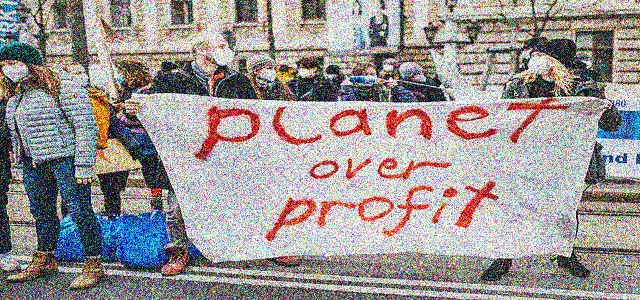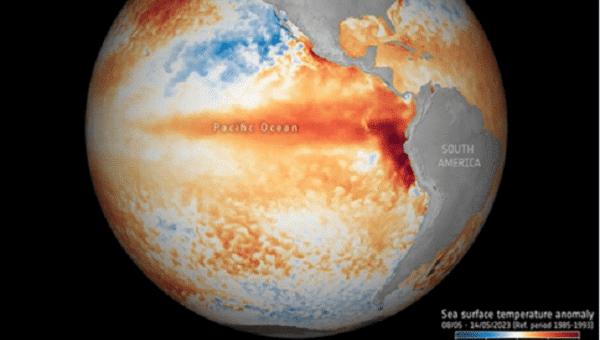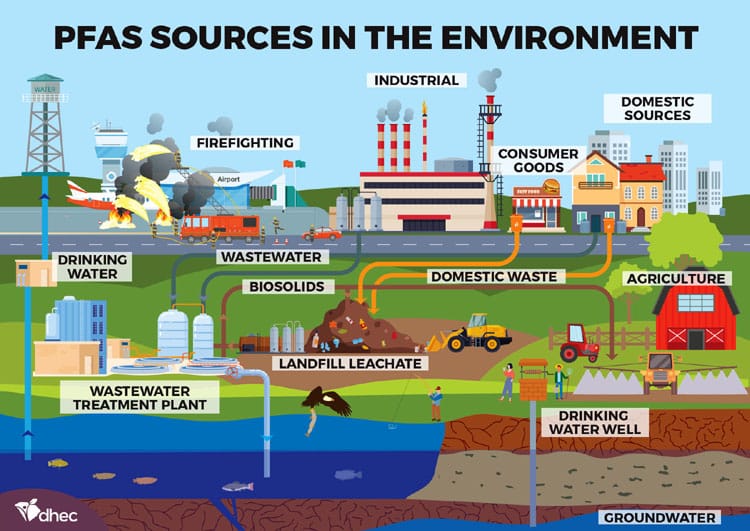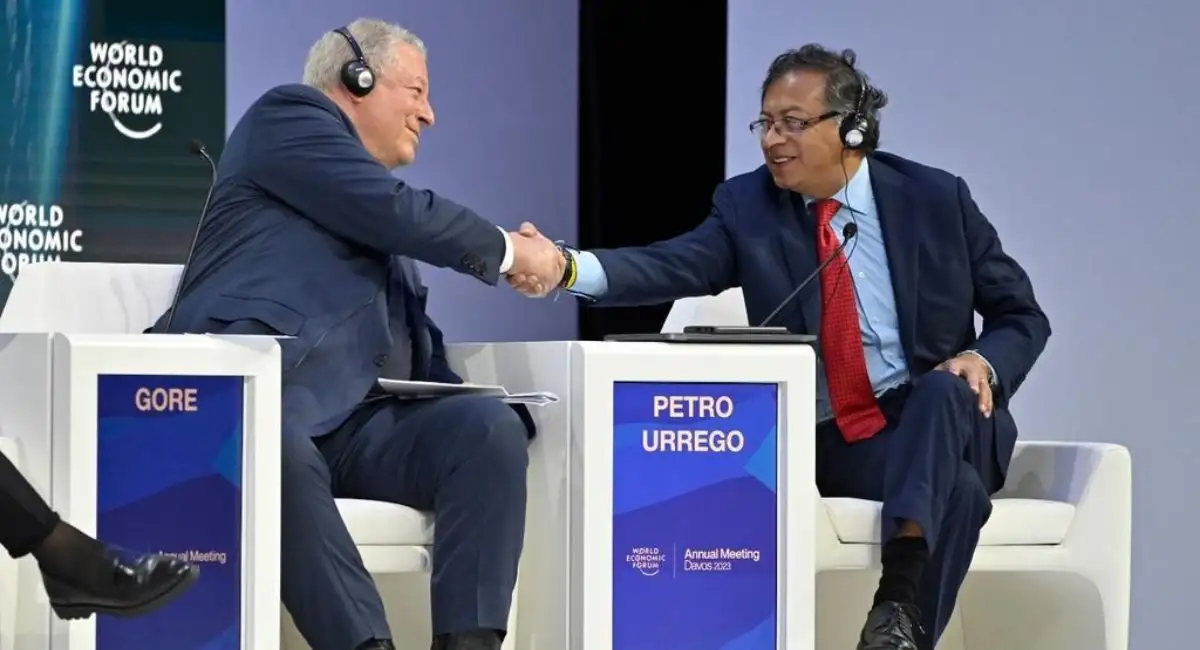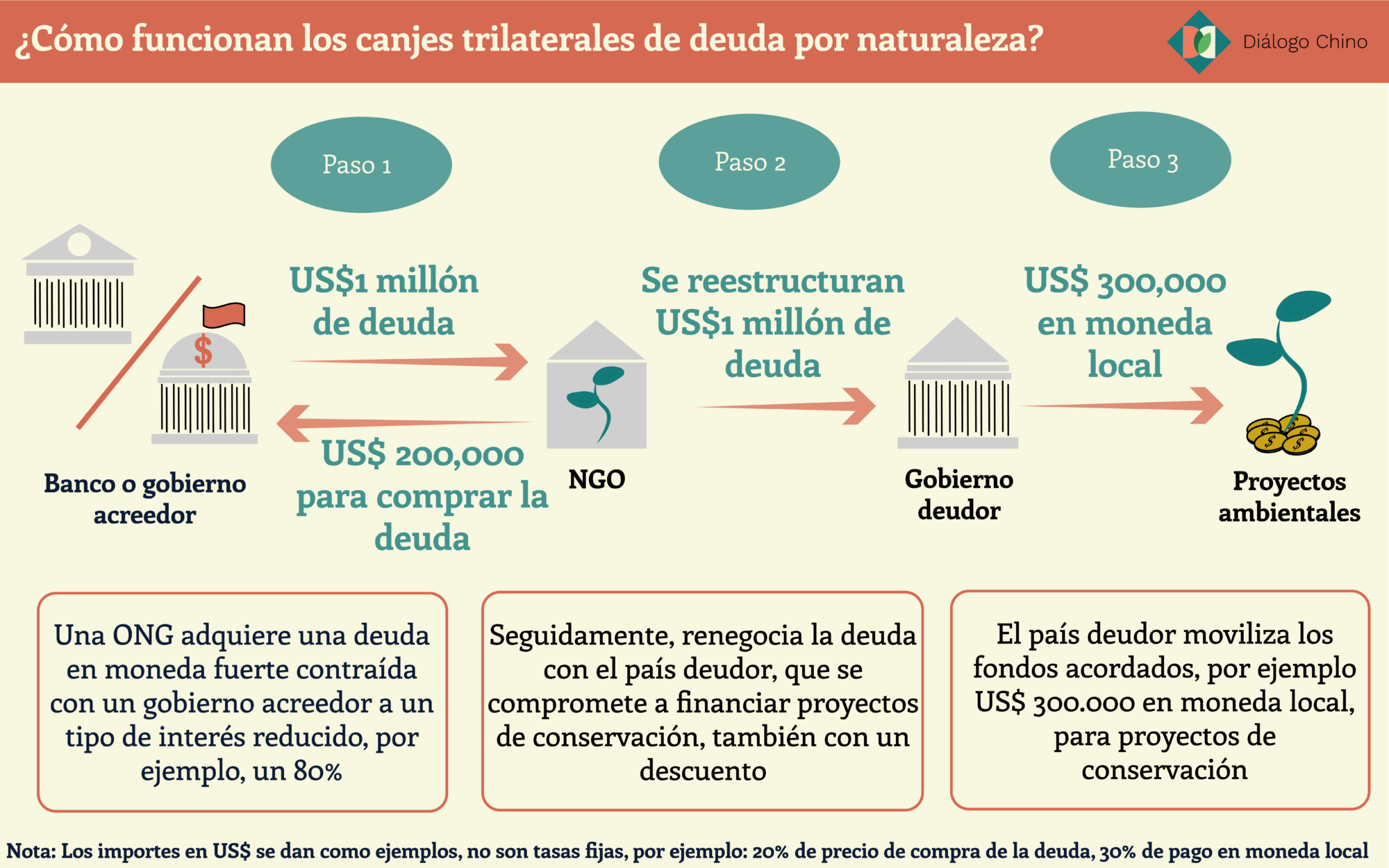Earth Day 2023: Biden’s betrayal, government repression and sodium batteries
April 24, 2023 Chris Fry

Despite promises not to, Biden is opening Alaska wilderness to more oil drilling.
April 22 is this year’s “Earth Day.” Since 1970 that date highlights the struggle by environmental activists, particularly from the Indigenous communities, against Big Oil and big business in their ceaseless profit-driven pollution of the planet’s air and water, of destroying natural habitats, of turning vast arable lands into deserts, and, most importantly, greatly increasing global warming.
President Joe Biden campaigned on a “turnaround policy” from Trump’s dismantling of long-standing environmental policies, as well as his approval of oil and gas pipelines and oil well drilling in pristine wilderness areas. Biden promised not to approve drilling projects on federal lands.
But as a NBC News March 13 article reported, that promise went out the window in the face of Wall Street pressure, specifically the energy giant ConocoPhillips, Alaska’s largest oil producer, with its “Willow Project.”
The Biden administration on Monday gave the green light to a sprawling oil drilling project in Alaska, opening the nation’s largest expanse of untouched land to energy production.
The multibillion-dollar project will be located inside the National Petroleum Reserve, about 200 miles north of the Arctic Circle, and could produce nearly 600 million barrels of crude oil over the next 30 years, according to the Interior Department.
The department estimated that the project could produce nearly a quarter of a billion metric tons of carbon dioxide emissions.
Environmental activists attacked
Meanwhile, Biden’s justice department, at the behest of the oil and gas giants, has seen fit to label environmental activists as “terrorists” even though they have not hurt any people and only damaged oil pipeline equipment. According to an April 28 ABC News article:
In the fall of 2016, under the cover of darkness, Jessica Reznicek had a singular focus: to halt the construction of the Dakota Access Pipeline. At valve sites across America’s heartland, she snuck through security fences, set fire to equipment, and used chemicals to burn holes in the pipeline itself.
To Reznicek, a veteran climate activist, the damage was justified: a nonviolent act of civil disobedience in pursuit of saving the planet. The Justice Department saw it differently. After Reznicek publicly acknowledged her crimes and entered a guilty plea, federal prosecutors subsequently persuaded a judge to apply a sentencing increase known as the “terrorism enhancement” against her, putting her behind bars for eight years.
The terrorism enhancement doubled her amount of time in prison.
The article goes on to describe how the oil and gas industry has succeeded in having their minions in the government declare “open season” on its opponents in the environmental movement:
In the last five years, 17 states have adopted so-called critical infrastructure protection laws that do just that — and 40 additional anti-protest bills are pending across the country, including a federal one.
“These laws introduced extraordinary penalties,” said Elly Page, a senior legal adviser at the International Center for Not-for-Profit Law. “Protesters who even momentarily cross onto property that contains a pipeline … can now face multiple years in prison.”
“They’re discouraging people from turning out and making their voices heard about what’s really the crisis of our time — the climate crisis,” Page said.
In 2017, 80 Republican and four Democratic members of Congress — who over the course of their careers received a combined $36 million in campaign contributions from the oil and gas industry — pressed the Justice Department to treat all eco-saboteurs as domestic terrorists.
The Department of Homeland Security later grouped some environmental activists — the so-called pipeline “valve turners” — with mass killers and white supremacists in a description of domestic threats, according to internal documents obtained through a Freedom of Information Act request by the nonprofit group Property of the People.
The state of Georgia has joined this wave of anti-protest repression. Police attacked a camp of peaceful protestors at a site where hundreds of trees were cut down to make room for a police training site in Atlanta:
Over the course of December and January, 19 opponents of the police training center have been charged with felonies under Georgia’s rarely used 2017 domestic terrorism law. [A] review of 20 arrest warrants shows that none of those arrested and slapped with terrorism charges are accused of seriously injuring anyone. Nine are alleged to have committed no specific illegal actions beyond misdemeanor trespassing. Instead, their mere association with a group committed to defending the forest appears to be the foundation for declaring them terrorists.
Police shot and killed an environmental activist there named Tortuguita on January 18. Police had claimed that he had fired a shot at police first before they riddled his body with at least 57 bullets. But an official autopsy report released on April 19 states that he had no gunpowder residue on his hands. And a family autopsy report indicates that Tortuguita had his arms raised when he was killed.
Neither Dylann Roof, who pleaded guilty to massacring nine people at a Charleston church, nor James Fields, who was convicted of killing a Charlottesville demonstrator with his car, were sentenced with the terrorism enhancement. Nor were any of those arrested for participating in the violent January 6, 2021, insurrection charged with terrorism.
Obviously, none of those acts challenged Big Oil’s revenues or Wall Street’s profit stream.
People’s China makes breakthrough with sodium batteries
An April 12 article in the New York Times titled “Why China could dominate the next big advance in batteries” details how Chinese research workers are advancing development of sodium rechargeable batteries. These would replace or work alongside the current lithium batteries in many applications. With the low cost of sodium versus the higher cost of lithium, this development may advance the effort to replace fossil fuels and counter global warming.
Sodium, found all over the world as part of salt, sells for 1 to 3 percent of the price of lithium and is chemically very similar. Recent breakthroughs mean that sodium batteries can now be recharged daily for years, chipping away at a key advantage of lithium batteries. The energy capacity of sodium batteries has also increased.
And sodium batteries come with a big advantage: They keep almost all of their charge when temperatures fall far below freezing, something lithium batteries typically do not do.
Unlike lithium batteries, the latest sodium batteries do not require scarce materials like cobalt, a mineral mined mainly in Africa under conditions that have alarmed human rights groups.
Chinese battery executives said in interviews that they had figured out in the past year how to make sodium battery cells so similar to lithium ones that they can be made with the same equipment. The Chinese giant CATL, the world’s largest manufacturer of electric car batteries, says it has discovered a way to use sodium cells and lithium cells in a single electric car’s battery pack, combining the low cost and weather resistance of sodium cells with the extended range of lithium cells. The company says it is now prepared to mass-produce these mixed battery packs.
The article states that sodium batteries need to be bigger than lithium batteries to hold the same charge, making them less useful in cars by themselves. But they could be very useful to store power from the electric grid, where space is not a problem. They could store vast amounts of power from solar panels and windmills to be used at night and when there is no wind.
This could make “green” energy production far more practical and cost-effective and thus could go a long way to eliminate fossil fuels, the main culprit in global warming.
China has an abundance of coal. But transitioning to solar and wind is far more possible there because it is a socialist country, a workers’ state, where its workers’ political party, the Communist Party, can plan and order that change without having to deal with a ruling class of capitalists obstructing that process to shore up their profits. That’s why the politicians and the corporate media here label China as “authoritarian” because the workers, through their Party, have the “authority” to control production.
The sodium battery development by the research workers will greatly assist that transition away from fossil fuels.
But the article does point out that China has one problem with sodium. While the country has deposits of lithium, it has to use coal-fired plants to produce “artificial” sodium. The U.S., on the other hand, has huge deposits of soda ash in Wyoming that could be used to make sodium without those power plants, but no large deposit of the high-priced lithium.
This means that the two countries theoretically could work together to manufacture both sodium and lithium batteries, which could create a vast reduction in the generation of greenhouse gasses from oil, coal, and natural gas around the world. This could greatly reduce carbon emissions.
The obstacle to this development is U.S. imperialism, dominated by the banks and Big Oil, who are now bent on an all-out effort to overturn socialism in China, even if it means a devastating war, possibly with nuclear weapons. And they do not hesitate to line up federal, state, and local police agencies to attack the environmental activists who they consider to be obstacles to their amassing huge profits.
For all the talk about “green energy” and “fighting climate change” coming out of Washington, the oil and gas industries, who have trillions of “sunk costs” in oil drilling and refineries and who are inflating gas prices as they make huge profits, are going to fight tooth and nail against the environmental movement struggle against global warming.
Just as the activists in Atlanta have combined the environmental movement with the anti-racist police terror struggle, the environmental movement as a whole cannot separate itself from the ongoing anti-imperialist struggle. Only then can this key movement succeed.
https://www.struggle-la-lucha.org/2023/ ... batteries/
The meek won’t inherit the earth: Mass action will save the planet
April 22, 2023 Sam Marcy
 On Earth Day 2023, Struggle-La Lucha presents this article by the Marxist thinker and fighter Sam Marcy, written for the 20th anniversary of Earth Day in April 1990.
On Earth Day 2023, Struggle-La Lucha presents this article by the Marxist thinker and fighter Sam Marcy, written for the 20th anniversary of Earth Day in April 1990.
Back in the Middle Ages, when a natural catastrophe like a crop failure or storm devastated large areas of a country, reducing the mass of the peasants to starvation while the lord’s manor was well stocked with provisions, it was considered wise policy for the lord to call the peasants into the courtyard. There a priest would intone the old biblical adage that the meek, the humble, the submissive will inherit the earth.
Today’s giant predatory corporations know the efficacy of such a tactic. They also resort to an even earlier practice, from the era of ancient Rome, when rebellious slaves were pacified with bread and circuses.
The monopolies which have vandalized the environment respond to the fear of an ecological catastrophe by encouraging a festive, carnival atmosphere on Earth Day, diverting what should be a serious anti-government, anti-capitalist demonstration away from the real polluters.
The largest corporations in this country, and the worst polluters, including Exxon, Mobil, Weyerhaeuser and Dow Chemical, to name only a few, have assembled a sophisticated media and political campaign aiming to show that they have done their utmost to use their immense technology for environmentally sound purposes, all for the good of the people.
The first Earth Day
Twenty years ago, on the first Earth Day, the environmental movement was officially born in the United States. In that year, 1970, millions of workers, young and old, men and women, able and disabled people, gay and straight, and nationalities from all over the world demonstrated their keen desire to avoid the terrible ill effects of pollution and the destruction of the physical elements of the environment.
It was a day of great promise, an outpouring of mass enthusiasm for ending the environmental damage that was rampant throughout the world but affected the industrialized countries, especially the U.S., most of all.
Today, 20 years later, there is more pollution, more damage to the air, the forests, the oceans, the rivers, indeed to all life. Acid rain, the ozone layer, global warming, toxic and radioactive wastes, and endangered species have become household words.
Earth Day 1970 came in the midst of the bloody carnage in Vietnam. That year, the U.S. invaded Cambodia. The Nixon government was under acute pressure from the anti-war and civil rights movements. It was a year in which huge masses of people were awakening to the real problems facing this country: war, hunger, racism, sexism, pollution.
For another five years, the U.S. government got around the movement, continuing the war while making promises of an alluring peace, at which time all these problems would be solved and, above all, there would be an effort to clean up the environment.
Finally, the mass protests against the Vietnam war in the U.S. and all over the world put an end to it. Glowing promises then began to flow freely like water in a stream. Now, it was said, the air would be cleaned up, nuclear waste would be eliminated, and environmentally clean plants would be built. Polluting sources of energy like coal, petroleum and nuclear energy would be put under strict governmental control. The damage would first be reduced and eventually, certainly by 1990, would be eliminated.
Promises of peacetime conversion
Such were the promises 20 years ago. You can look them up in the yellowed pages of the old newspapers. “Conversion planning” was the buzzword. Military-related companies especially were anxious to show they had already drawn up the blueprints for converting to cleaner, more peaceful methods of production.
What happened to them? Was it all fraud? Was it make believe? Or was it both?
The fact of the matter is that no sooner was the war in Vietnam ended than the Pentagon and the military-industrial complex began not to scale down the armaments, not to beat their swords into plowshares, but to expand and modernize on an unprecedented scale.
This is of critical importance to all questions relating to the security of the physical environment, for there is no greater polluter of the air, the water and the land than the military. Even when it is not actually using them, the Pentagon is constantly testing all kinds of weapons — conventional, nuclear, chemical and biological.
Trillions for the Pentagon
Scientists may argue over how old the planet is, how fragile is its ecology, or its degree of warming, but there can be no disagreement that since Earth Day 1970, literally trillions of dollars have been spent by the Pentagon.
Since Earth Day 1970, countless acts of war have been carried out or supervised by U.S. forces in El Salvador, Nicaragua, Grenada, Panama, Libya, Lebanon and Afghanistan, lately in Peru and Bolivia, and innumerable covert operations in Cambodia, Angola, Mozambique, Ethiopia and dozens of other countries. Large-scale military exercises take place each year in Korea, Germany and the Caribbean, as well as in the U.S. itself.
Today, just like 15 years ago at the end of the Vietnam war, there is a flood of peace promises. Congress is agog with them. The White House has given its blessings. Even the Pentagon speaks of the peace dividend. But is there any substance to it?
The kind of Pentagon operation just referred to is expanding more rapidly than ever. Of course, redundant nuclear weapons are being discarded on both sides of the East-West confrontation line. But mark well. Not one nuclear test related to the modernization of the nuclear fleet, submarines, aircraft carriers or the new “super-supersonic” planes has been canceled, except for reasons of bad weather or malfunction. The brave men and women of Greenpeace and other groups that have tried to stop these tests can tell you what is really going on with the alleged reduction of the nuclear threat.
The greatest of all polluters, the biggest offender and the most significant element in the vandalism of the environment remains the Pentagon.
As this is being written, Secretary of Defense Cheney is opposing even the smallest cuts in sea-based missiles. On the contrary, they are continuing to MIRV the sea-based missiles (add multiple warheads), which means multiplying their capacity for devastation.
War-related industries and banks
Lest some think we are taking a narrow, pacifist view by focusing in on the war-making establishment, let it be said that the Pentagon is, of course, not an island unto itself. Every single one of the 100 largest banks in the U.S. lends to, holds deposits of or floats securities for corporations in league with the so-called defense industry. That’s a lot of banks.
Of all the 15,000 banks in the U.S., small, medium and large, not one would relinquish the profits it gets in connection with defense orders. There is not one bank, not one huge corporation that will put people ahead of profits. Such is the reality of the situation on Earth Day 1990.
It is now estimated that the bailout of failing banks will cost the government $500 billion. The amount appropriated for the environment is a mere pittance, a tiny fraction of this gigantic sum.
Of the giant industries which play a key role in the U.S. economy, petroleum and coal pollute and vandalize the environment the most, even though hundreds of thousands of workers have been displaced from these industries. All manufacturers, especially in the petrochemical industry and pharmaceuticals, and including those using the most sophisticated technologies, contribute their share to pollution. For the most part they are completely unregulated; any government supervision is strictly superficial.
Good will vs. profits
To get to the core of the problem, one must take into account that it is profits which motivate the operations of the capitalist economic system in the U.S. Ever fewer and more powerful groupings of industrial and financial magnates control the means of production and run the country, from the local county offices all the way up to the White House.
If we overlook this fact, if we believe that just protesting, just appealing to the good will and humanitarian instincts of these giant, avaricious and predatory elite financiers and industrialists will change the situation for the better, we will be building upon illusions.
The mass of the people have been told over and over again to be patient, to have good will toward their oppressors, that in time good behavior on the part of the masses would reach the consciences of the evildoers. The meek shall inherit the earth.
But the meek in history have never made it. There’s not a single example over hundreds of years where the rich and powerful have given way to the poor, to the ordinary workers and peasants, just because they have been good and subservient and passive.
To appeal to the good will, common sense and even self-interest of the big financiers and industrialists is to expect them to be able to abandon the lucrative profits, exploitation and oppression which are linked to pollution. This is a bankrupt theory, unsuitable in this or any other age.
The history of the environmental struggle shows that relying on the multinational corporations, on the banks, on the insurance companies and on capitalist politicians brings no results.
At this critical phase in world history, it is only the deliberate activity of the masses themselves, when they intervene and threaten the system of capitalist exploitation and oppression, that can sweep away the polluters like the hazardous waste they have created on this planet.
https://www.struggle-la-lucha.org/2023/ ... -planet-2/
*********
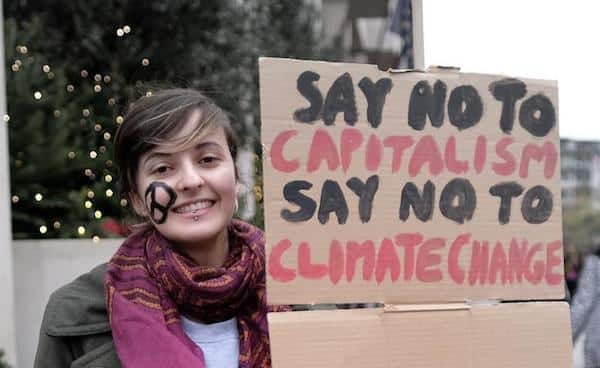 Here comes everyone: climate, class and the movement we need
Here comes everyone: climate, class and the movement we need
Originally published: Counterfire on April 21, 2023 by Feyzi Ismail (more by Counterfire) | (Posted Apr 24, 2023)
Tens of thousands of people are expected to be in central London for four days starting Friday to protest the government’s lack of action on the climate crisis. Extinction Rebellion (XR) has called it The Big One, and the idea is to surround parliament to demand ‘systemic change’. Any organisation worth their salt will be there—some 200 or more—along with protesters from across the country. From Greenpeace, Friends of the Earth and other NGOs, to unions like PCS and Unite, to movement organisations CND and Stop the War Coalition, direct action groups Don’t Pay and #StopRosebank—and Just Stop Oil, of course—and rank-and-file campaigns like NHS Workers Say NO! Here comes everyone, as the publicity says.
At the start of this year, XR declared a move away from direct action that disrupts the public, instead concentrating on ‘disrupting government’ and where power lies: parliament, fossil fuel corporations, banks and so on. They pledged to focus efforts on mobilising numbers in mass demonstrations, reaching out to movements and organisations and connecting the climate crisis to the cost-of-living crisis and the political system. They have supported picket lines and demonstrations. All of this is a good move.
In concrete terms, disrupting the government’s agenda of business-as-usual means forcing them to reverse decisions like developing the Rosebank oil field—the largest undeveloped oil field in the North Sea—for example, forcing them to tax the profits of oil companies and halt further exploration, forcing them to institute Green New Deal policies. These would be a start, and they require a movement with the social weight to push for them.
It was barely a month ago that the Intergovernmental Panel on Climate Change (IPCC) finished its 8,000-page sixth assessment report. It contains everything we know about the depth and scale of the crisis in comprehensive detail. A few weeks prior to its publication, Big Oil—generally understood as the world’s 5 or 6 biggest oil companies—posted profits of over $200bn. These were the highest ever profits made in the history of Big Oil.
Meanwhile, emissions continue to rise. Since the IPCC published its first report in 1990, report after report has come out, warning of the consequences of the 200-year trend of rising greenhouse gas emissions. Not humanity as a whole, but specifically those in power, have failed to do anything about it. We are beyond raising awareness about the crisis, beyond persuading the capitalist class to change course. If the political elites aren’t moving fast enough, ordinary people in the labour movement and the social movements have to take things into their own hands. Now it comes down to strategy.
What will actually challenge the foundations of the capitalist economy, and bring forth the ‘root-and-branch transformation’ of society we so desperately need? One of the things we have to challenge is the idea that working people have to make sacrifices in order to avert catastrophe, and focus on how addressing the crisis has to go hand in hand with improving people’s lives. Immediately, socialist policies such as nationalisation of power generation and distribution, and nationalisation of transport, are key. This requires massive investment in planning and infrastructure.
But in order to ensure that industry is not directed in the interests of profit, we need massive pressure from below. The current strike wave is an opening. While workers are not striking for the climate as such, they are striking for pay, conditions, pensions and welfare in general—the very things that would be guaranteed in a society that also cared for the planet. If the strike wave continues, if we start to win victories, we make more demands, including demands on climate action.
It’s quite clear that the strikes themselves aren’t just about pay. Demands for renationalisation of rail and the post office, funding for the NHS, valuing education and so on—all of these demands can be integrated within the climate movement. This would mean that the transition away from polluting industries, for example, has workers at its core. Retraining and redeployment for workers in these industries would be foundational. The strategy for the climate movement has to involve uniting with striking workers, those who are using their power to disrupt profits and refusing to accept the status quo.
If XR continues connecting up with wider social movements, and the rising militancy in the unions continues, we have a chance. Mass action has worked to bring change in the past, we need it now on the biggest scale and on all fronts more than ever.
https://mronline.org/2023/04/24/here-comes-everyone/#
It's not enough to be 'against capitalism'. One must have a plan and develop the means to do something about it.Say hello to Comrade Lenin.
*************
Insect Apocalypse in the Anthropocene, Part 4
April 19, 2023

How genetic engineering and weed killers accelerate capitalism’s assault on insect life
PART 1 discussed the sharp decline in insect populations.
https://climateandcapitalism.com/2023/0 ... opocene-i/
PART 2 discussed the role of monocrop farming.
https://climateandcapitalism.com/2023/0 ... e-part-ii/
PART 3 discussed the new generation of insect killers.
https://climateandcapitalism.com/2023/0 ... ne-part-3/
PART 4 discusses the gene revolution and monoculture.
by Ian Angus
“Plants are, of course, the basis of almost every food chain, and by developing methods of farming that almost entirely eradicate weeds from arable fields, such that crops are often close to pure monocultures, we have made much of our landscape inhospitable to most forms of life.” —Dave Goulson[1]
For decades, advocates of genetically engineered (GE) food have been promising miracle crops that would save lives and feed the world. Grains that flourish during droughts. Improved nutrition, including rice that contains eyesight-saving vitamins. Apples that don’t rot. Reduced CO2 emissions. More food from less land.
According to the pro-biotechnology International Service for the Acquisition of Agribiotech Applications (ISAAA), the benefits of genetic modification are so great that the area devoted to GE crops grew from zero in 1996 to 190.4 million hectares (470.5 million acres) in 2019 — “the fastest adopted crop technology” in history.[2]
And yet, if we look at the ISAAA’s own statistics, we find that 85 percent of the area devoted to GE crops is in just four countries, USA, Brazil, Argentina, and Canada, and about 99% of all the genetic modifications in commercial crops today fall into just two categories, herbicide tolerance and insect resistance — they have nothing to do with improving food quality. What’s more, soybeans and corn, which comprise over 90% of GE crops, are mostly used to make animal feed and biofuel, not to feed hungry people.
The principal results of genetic engineering in agriculture have been expanded monocultures in North and South America, increased use of chemical poisons, and increased profits for the handful of corporations that dominate the production of agricultural chemicals and GE seeds. There is much debate about the impact of GE crops and the associated pesticides on human health, but this article focuses on their role in creating massive, life-destroying monocultures.
* * * *
As we’ve seen, two features of industrial agriculture have driven the insect apocalypse: massive use of poisons and habitat destruction. Billions of six-legged animals are killed every year by chemical poisons that supposedly protect crops. And large scale monocultures — single-crop farms fields and farms — deprive them of food and places to live and breed. Both are aspects of what has been called the green revolution, increased production driven by methods that have damaged the environment and reduced biodiversity.
In the 1990s, a second and more destructive phase of industrial agriculture began, a phase that we might call the gene revolution. GE seeds changed the game, dramatically expanding the areas devoted to insect-hostile monocultures. The transition was initiated in 1996 by the St. Louis-based chemical company Monsanto, whose most important product was the weed killer Roundup.
“Weed” is not a scientific category. A weed is an unwanted plant, one that it is growing in the wrong place, competing with more desirable species for space, nutrients, water and sunlight. Traditionally, farmers limited weed growth by using cover crops, mulching, and frequent crop rotation, but physical removal was also required to kill weeds and prevent them from contaminating the harvest. For millennia, hoeing the weeds was a necessary and labor-intensive part of farming, and it still is in much of the world.
In the early 20th century, some farmers in Europe and North America used sulfuric acid and arsenic compounds to kill weeds, but chemical applications didn’t become common until the late 1940s, when the plant-killing chemical 2,4-D, developed by the US military as a biological weapon, became generally available.[3] It was soon joined by other synthetic herbicides, including 2,4,5-T, dicamba and triclopyr, as fundamental weapons in what Rachel Carson called “the chemical barrage against the fabric of life.”[4] They were widely adopted, Jennifer Clapp writes, because they made farming easier.
“These chemicals were successful in killing unwanted plants over wide areas and were popular because they saved labor. As farm size began to grow with the increasing mechanization of agriculture in the middle of the 20th century, herbicide use expanded dramatically and became the norm for weed control.”[5]
Monsanto introduced Roundup In 1976. Its principal ingredient was glyphosate, a chemical that kills plants by blocking their ability to create essential proteins. It was mainly used for clearing fields before planting and for killing weeds on lawns and roadsides, but it would kill growing crops if sprayed on or near them.
In 1996 Monsanto changed that with genetic engineering: instead of changing the poison, it changed the crops. Its two families of genetically modified seeds were highly successful.
Roundup Ready (RR) seeds were engineered to tolerate glyphosate — Roundup sprayed on fields of RR crops would kill all other plants while leaving the crops intact. It was offered first for soybeans and canola, then corn, alfalfa, cotton, and sorghum.
Monsanto’s corn (maize) and cotton seeds were engineered to contain genes from Bacteria thuringiensis (Bt), an organism that is toxic to some caterpillars and beetles that eat those crops. Effectively, crops grown from Bt modified seeds produce their own insecticides.
Monsanto subsequently introduced corn and cotton seeds that contained both genetic traits. According to the ISAAA, 45 percent of GE crops are now devoted to crops that are “stacked” with genes for both herbicide tolerance and insect resistance.
The patented seeds were more expensive, but they simplified production. Glyphosate could now be sprayed during the growing season without harming crops, producing pure monocultures, fields where no competing plants could grow. Farms that grew Roundup Ready crops could be almost entirely mechanized, reducing labor to a minimum. And, as Monsanto emphasized in its advertising, since Roundup was deadly to all non-GE plants, it was “the only weed control you need.” A company website described the combination of glyphosate and glyphosate-resistant seeds as “the system that sets you free.”[6]
At the same time, Monsanto moved to lock up the agricultural input market by acquiring over 30 independent seed companies, becoming the largest seed seller in the world by 2005. Controlling chemicals and seeds and the distribution channels gave the company a huge advantage in the farm inputs industry. “The company bragged to shareholders that it saw an 18 percent rise in the volume of the glyphosate products it was selling just from 1999 to 2000.” Half of its $5.5 billion revenues in 2000 came from glyphosate.[7]
For over two decades, glyphosate has been the world’s most widely-used herbicide. Glyphosate accounted for 1% of herbicides sprayed on the four biggest US crops in 1982, 4% in 1995, 33% in 2005, and 40% in 2012.[8] “By 2020, 90 percent of all corn, cotton, soybeans and sugar beets planted in the United States [were] genetically modified to tolerate one or more herbicides.”[9]
This graph dramatically illustrates how Monsanto’s GE seeds increased sales and use of Monsanto’s weed killer in the United States.

Agricultural glyphosate use (acres) in the United States, 1990-2014. (Source: Stacy Malken, Merchants of Poison, (Friends of the Earth, 2022), 14.)
Soybeans and corn (maize) are by far the largest crops grown in the United States — together they occupy nearly 190 million acres (77 million hectares),[10] and over 90% of that is planted with genetically engineered seeds. Add smaller areas of GE cotton, sugar beets, alfalfa and canola, and over twelve million acres of GE crops in Canada, and you have an immense area that is profoundly inhospitable to insects.
South America
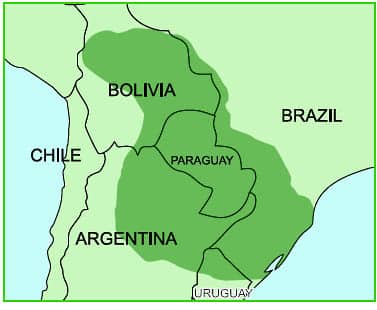
Declaring “Soy knows no borders,” the agrochemical giant Syngenta called this area the “United Republic of Soyabeans” in a 2003 advertisement.
Monsanto’s sales drive for Roundup Ready Soybeans wasn’t limited to the North America. In the southern cone of South America, where landownership is much more concentrated than in the global north, large landowners adopted the seed/herbicide combination rapidly, beginning in 1996 in Argentina and spreading over the following decade to Paraguay, Uruguay, Brazil and southern Bolivia. Replacing labor with chemicals allowed landowners to expel small tenant farmers by the millions, creating immense soy plantations operated by investment groups. For every agricultural worker employed in GE soy production in Brazil, eleven were displaced.[11]
As early as 2005, two leading ecologists reported on the massive social and environmental dislocation caused by landowners’ adoption of GE soybeans:
“In 1998 there were a total of 422,000 farms in Argentina while in 2002 there were 318,000 farms, a reduction of 24.5%. In one decade soybean acreage increased in 126% at the expense of lands devoted to dairy, maize, wheat and fruit production….
“In Paraguay soybeans are planted on more than 25 % of all agricultural land in the country and in Argentina soybean acreage reached in 2000 almost 15 million hectares producing 38.3 million metric tons. All this expansion is occurring dramatically at the expense of forests and other habitats. In Paraguay much of the Atlantic forest is being cut. In Argentina 118,000 hectares of forests have been cleared to grow soybean, in Salta about 160,000 hectares and in Santiago del Estero a record of 223,000 hectares. In Brazil, the Cerrado and the savannas are falling victim to the plow at a rapid pace.”[12]
At the same time throughout the region, soy producers expanded their holdings by large-scale land clearances and deforestation.
Brazil and the United States are now the largest soybean producers in the world, by a large margin — together they grow more than twice as much soy as the rest of the top ten countries combined.
In 2016, environmental journalist Nazaret Castro found that “Around 60 per cent of Argentina’s arable land, a similar percentage in southern Brazil, and almost 80 per cent in Paraguay, is already planted with soy, which is virtually all genetically modified.”[13]
According to a recent study that used satellite mapping:
“From 2000–2019, the area cultivated with soybean more than doubled from 26.4 million hectares to 55.1 million hectares. Most soybean expansion occurred on pastures originally converted from natural vegetation for cattle production. The most rapid expansion occurred in the Brazilian Amazon … Across the continent, 9% of forest loss was converted to soybean by 2016. Soy-driven deforestation was concentrated at the active frontiers, nearly half located in the Brazilian Cerrado.”[14]
As in North America, South American soy production is accompanied by massive use of herbicides, particularly glyphosate. In Brazil, GE soybean crops are sprayed with glyphosate an average of three times in each growth cycle — in 2019 alone, Brazilian growers used 218 thousand tons of the weed killer.[15]
Resistance and the Treadmill
In Silent Spring, Rachel Carson described how extensive use of pesticides had caused the evolution of insects and weeds that the chemicals couldn’t kill.
“Darwin himself could scarcely have found a better example of the operation of natural selection than is provided by the way the mechanism of resistance operates…. Spraying kills off the weaklings. The only survivors are insects that have some inherent quality that allows them to escape harm. … There results a population consisting entirely of tough, resistant strains”[16]
The result, she wrote, was a “treadmill of chemical control,” that depends on constantly increasing use of ever more deadly poisons.[17] Others have described the consequence of agriculture’s chemical-driven evolution as an unwinnable arms race between pesticides and pests.
When Monsanto sought the US Department of Agriculture’s approval for Roundup Ready seeds, it seemed to claim that glyphosate was somehow immune to evolution, due to some undefined “biological and chemical properties.” Its petition claimed that, “glyphosate is considered to be a herbicide with low risk for weed resistance,” so “it is highly unlikely that weed resistance to glyphosate will become a problem as a result of the commercialization of glyphosate-tolerant soybeans.” Rather than causing resistance, “total herbicide use may be reduced.”[18]
Few scientists agreed. Ecologist Miguel Altieri, for example, predicted in the socialist magazine Monthly Review in 1998 that “these crops are likely to increase the use of pesticides and to accelerate the evolution of ‘superweeds’ and resistant insect pest strains.”[19]
That is exactly what has happened.
Within a few years, weeds that glyphosate can’t stop began spreading in North and South America — glyphosate resistance has now been confirmed in about 50 species. Some are particularly destructive: unchecked growth of pigweed (Palmer amaranth), for example, can slash soybean yields by 80 percent and corn yields by 90 percent. As Jennifer Clapp’s study of glyphosate adoption shows, glyphosate has become yet another driver of the chemical control treadmill.
“In the face of growing weed resistance, farmers initially sprayed glyphosate in higher amounts on the same crops to control those weeds. As glyphosate-resistant weeds continue to emerge, farmers, encouraged by herbicide companies, are increasingly applying older and more toxic chemicals, such as dicamba and 2,4-D, to control weeds in their fields.”[20]
Similarly, the addition of Bt genes to corn and cotton has increased insect resistance and pesticide use. The 2022 Pesticide Atlas reports:
“In the USA, specimens of the Western corn rootworm are already resistant to more than one Bt toxin. At the beginning of Bt crop cultivation, the number of pesticides used actually decreased. But only impermanently: Sales of insecticides in corn production in the US have increased significantly. In 2018, Indian farmers spent 37 percent more money per hectare on insecticides than before the introduction of genetically modified cotton in 2002.”[21]
Until recently, GE seeds contained a maximum of three genetic modifications, but Bayer, which acquired Monsanto in 2018, recently upped the ante with eight genetic changes in its Smartstax Pro Corn. These heavily engineered seeds tolerate glyphosate and dicamba weed killers, and produce five different Bt insect-killing toxins, and use new RNA interference technology to block essential protein production in rootworms, the most damaging corn pest.
The arms race continues.
Monocultures and capitalism
In 1859, in the final paragraph of Origin of Species, Charles Darwin described the natural world as “a tangled bank, clothed with many plants of many kinds, with birds singing on the bushes, with various insects flitting about, and with worms crawling through the damp earth … [filled with] elaborately constructed forms, so different from each other, and dependent upon each other in so complex a manner.”
If Darwin could see what capitalist agriculture has done to tangled banks in our time, he would undoubtedly agree with conservation ecologist Ian Rappel: “the replacement of wondrous biodiversity with monocultural monotony has become central to capitalism’s socio-ecological metabolism.”[22]
“The ecology that is actively engineered under capitalism is one determined by ruling class aspirations for profit. …
“Capitalism has only been able to sustain its rejection of nature and its destructive ecological tendency through pulling in artificial ecological commodities from various arms of capitalist industry — for example in agriculture. This creates a dysfunctional ecological tendency towards ecological uniformity and simplicity inevitably resulting in biodiversity loss and extinction.”[23]
Miguel Altieri links the rapid decline of biodiversity to the globalization of capitalist agriculture in the late twentieth century.
“The very nature of the agricultural structure and prevailing policies in a capitalist setting have led to environmental crisis by favoring large farm size, specialized production, crop monocultures and mechanization. Today, as more and more farmers are integrated into international economies, the biological imperative of diversity disappears due to the use of many kinds of pesticides and artificial fertilizers, and specialized farms are rewarded by economies of scale.”[24]
Maximizing production of a few plants that can be sold profitably on world markets has led to the creation of vast monocultures — factory-like farms that poison and starve Darwin’s tangled bank. Maintaining those monocultures requires ever-increasing amounts of chemicals, trapping farmers on a treadmill that is very profitable for the agrochemical industry. It’s estimated that global herbicide sales totaled US$39 billion in 2021 and are likely to reach $49 billion by 2027. The equivalent figures for insecticides are US$19.5 billion and $28.5 billion.[25]
So long as a handful of agrochemical companies and commodity traders control the inputs and outputs of global agriculture, capital’s drive to impose monocultural monotony will continue — and the insect apocalypse will accelerate.
Notes
[1] Dave Goulson, Silent Earth: Averting the Insect Apocalypse (HarperCollins, 2021), 123.
[2] ISAAA, “ISAAA Brief 55-2019: Executive Summary,” ISAAA Inc., 2019,
[3] 2,4-D is short for 2,4-Dichlorophenoxyacetic acid — C8H6Cl2O3
[4] Rachel Carson, Silent Spring (Mariner Books , 2002), 297.
[5] Jennifer Clapp, “Explaining Growing Glyphosate Use: The Political Economy of Herbicide-Dependent Agriculture,” Global Environmental Change 67 (February 24, 2021).
[6] Bartow J. Elmore, Seed Money: Monsanto’s Past and Our Food Future (W. W. Norton, 2021), 186, 187
[7] Carey Gullam, Whitewash: The Story of a Weed Killer, Cancer, and the Corruption of Science (Island Press, 2017), 46.
[8] Jennifer Clapp, “Explaining Growing Glyphosate Use,” Global Environmental Change 67 (February 24, 2021).
[9] Erica Borg and Amedeo Policante, Mutant Ecologies: Manufacturing Life in the Age of Genomic Capital (Pluto Press, 2022), 124.
[10] Crop Production Historical Track Records (United States Department of Agriculture, 2019), 31, 164.
[11] Miguel A. Altieri and Walter A. Pengue, “Roundup Ready Soybean in Latin America: A Machine of Hunger, Deforestation and Socio-Ecological Devastation,” Biosafety Information Centre, August 8, 2005.
[12] Miguel A. Altieri and Walter A. Pengue, “Roundup Ready Soybean in Latin America: A Machine of Hunger, Deforestation and Socio-Ecological Devastation,” Biosafety Information Centre, August 8, 2005,
[13] Nazaret Castro, “‘United Republic of Soyabeans’ and the Challenge to Agriculture,” Equal Times, December 12, 2016.
[14] Xiao-Peng Song et al., “Massive Soybean Expansion in South America since 2000 and Implications for Conservation,” Nature Sustainability 4, no. 9 (August 7, 2021), 784. A moratorium on new soy farming was imposed in the Brazilian Amazon was imposed in 2006: development then shifted to even larger-scale production in the tropical Cerrado region in the southeast.
[15] Aldo Merotto et al., “Herbicide Use History and Perspective in South America,” Advances in Weed Science, September 15, 2022, 5.
[16] Rachel Carson, Silent Spring (Mariner Books , 2002), 273.
[17] Rachel Carson, Silent Spring (Mariner Books , 2002), 279
[18] “Petition for Determination of Nonregulated Status: Soybeans with a Roundup Ready™ Gene,” (1993) 56, 55.
[19] Miguel A Altieri, “Ecological Impacts of Industrial Agriculture and the Possibilities for Truly Sustainable Farming,” in Hungry for Business: The Agribusiness Threat to Farmers, Food, and the Environment, ed. Fred Magdoff (Monthly Review Press, 2000), 86. (Article originally published in Monthly Review, July-August 1998)
[20] Jennifer Clapp, “Explaining Growing Glyphosate Use: The Political Economy of Herbicide-Dependent Agriculture,” Global Environmental Change 67 (March 2021).
[21] Caspar Shaller, ed., Pesticide Atlas 2022 (Friends of the Earth Europe, 2022), 37.
[22] Ian Rappel, “The Habitable Earth: Biodiversity, Society and Rewilding,” International Socialism, 2021.
[23] Ian Rappel, “Capitalism and Species Extinction,” International Socialism, 2015.
[24] Miguel A Altieri, “Ecological Impacts of Industrial Agriculture and the Possibilities for Truly Sustainable Farming,” in Hungry for Business, ed. Fred Magdoff (Monthly Review Press, 2000), 78.
[25]
https://www.statista.com/statistics/135 ... -globally/;
https://www.statista.com/statistics/606 ... de-market/
https://climateandcapitalism.com/2023/0 ... ne-part-4/
I've been an amateur naturalist for over 50 years and the decline in insect numbers and diversity is scary and depressing, particularly over the past 25 years, When I lived in a suburban environment 30 years ago a 'light trap' set up on the back porch light would collect numerous insects of myriad variety. Nowadays I live in the countryside just a mile or so from a river and the insect action at the porch light is slim, the varieties of beetles, moths and aquatic breeders perhaps 10% of what I used to know.
